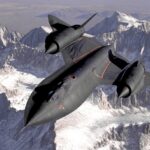Modern aircraft are extremely difficult to understand. As technology continues to improve these modern marvels get more and more intricate. However, the intricacies of aerodynamics stay the same. Aerodynamics can be described as the study of objects that move through the air, or the synergy between a solid object and the air. There are four main forces that act on an aircraft. These forces include: thrust, lift, drag, and weight. Thrust is the force that overcomes drag. Thrust is calculated depending on how the engines are mounted on a craft. The power of the engines also determine thrust. Drag is the force that opposes thrust. The air naturally resists any moving object, so this resistance is generally called drag. Weight is a natural force found in nature. Everything that has mass and takes up space also has weight. The weight is what pushes a craft downwards, and normally collects at a single point. To overcome weight we have aerodynamic lift. Lift is created by the wing airfoil. However, all these forces working together allow an aircraft to be propelled.
The basics of aerodynamics came from the study of birds, bats and other flying creatures. Structurally, aircraft are designed for the best efficiency. Aircraft wings are rounded at the leading edge, which leads to a sharp trailing edge. Lift is generated when air hits the leading edge and disperses because of pressure. Under the wing positive pressure is created, while on top of the wing negative pressure is created. The pressure accumulates at the trailing edge creating the lift force. The amount of lift generated also depend on different factors including: air velocity, camber, area of wing, angle of attack, and direction of the oncoming air.
Aircraft also have a tendency to work with different physical and scientific principles. One general principle which aircraft work by is Bernoulli’s principle. Bernoulli’s principle states that as the speed of a fluid increases, it works in conjunction with a decrease or increase in pressure resulting in an decrease in the potential energy of a fluid.
Aerodynamics also contribute in creating more efficient automobiles. Think of the air that surrounds us as a block. As something like a bullet moves through the air it avidly disrupts it. You can easily see how air works when looking through a wind tunnel. Wind tunnels are used in the creation of cars, airplanes, and to study general movement. Engineers have come up with new strategies on improving efficiency for all modes of transportation. The more rounded a car is, the more efficient it is. Figuring out efficiency and aerodynamics isn’t exactly a science. Math and physics are both involved. To figure out the amount of drag we need variables such as velocity, and weight. Thrust, lift, and weight are also all calculated. Once a potential number is reached, engineers can then attempt to improve those numbers.
Learning about aerodynamics is extremely important and beneficial to us. This science isn’t just important in the aerospace field, it is important in vehicle design, and even architecture. Aerodynamics is used in sailing, and structural planning.





